In North America the travel trailer can trace it’s roots back to the 1920s. The concept was based on a European concept of the horse pulled traveling trailers used by traveling salesmen and roaming tribal groups. There few amenities compared to today’s units and primary focused on storage and sleeping places. The travel trailer is normally towed behind another vehicle (car, truck, SUV) from the bumper or a hitch mounted to the frame.
Travel Trailers can take on numerous sizes and designs. Manufactures are always developing new designs and layouts. What is available today may or may not be available in future model years. Designs can be on the low end very basic with minimal amenities and very compact, some under 20′ in length. And like any luxury item, you can go up in amenities, sizes, lengths and prices. There are some that make use of features from the Pop-ups with additional sleeping areas available thanks to swing out partitions on the ends.
Many also include slide outs along the sides to increase the usable space at the campgrounds. Larger units may have more then one slide out. It is still possible to use and walk around the inside of the units when the slide outs are pulled in but it is a bit more crowded. Slide outs are also common in 5th Wheel Trailers, Class A and Class C motor-homes/RVs and some larger Class B units.
Tower Travel Trailers lengths can be under 20 feet to the upper 30s. The larger the trailed the more important the size of the towing vehicle. Most people with limited towing experience think that towing capacity is all about horsepower to get the trailer moving. That is actually the least important factor. The tow unit must have sufficient weight to maintain traction during stopping and when going down hill. Starting a long mountain down with an undersized towing unit can result in the trailer pushing the towing unit down the roadway, eventually causing a wreck. The towing unit also needs to be big enough to maintain control of the trailer during windy conditions.
The larger the trailer being towed, the more important it is to consider three important factors. Anti-sway systems to help balance the load distribution and control the trailer in (especially) windy conditions, extension mirrors to see around the trailer which is generally wider then the towing truck/SUV and back up cameras to help you see what it behind you even on the road.
I will discuss each separately and include a few links to help you see more details.
Anti-Sway are also referred to as Weight Distribution Hitches. Anti-sway helps keep the trailer in line with the towing unit during cross winds or uneven road surfaces. Should you are while driving, serve off the road for any reason, an anti-sway hitch will keep the trailer from jerking to the side as one side’s tires encounter the drag of the gravel. A weight distribution hitch, helps keep the towing unit and the trailer in a vertical straight line. If you have even seen a car or truck towing a trailer with the front of the towing auto’s nose pointing up because the trailer is pushing down on the bumper, you understand the value of a weight distribution hitch.
These hitches are rated in the maximum weight you can use them with. It is very important to not use a 5,000 pound hitch while towing a 10,000 pound trailer. A failure of the entire system is possible. While it is possible that these hitch systems may be only anti-sway or weight distribution, it is recommended that you get one that does both. While these may seem expensive at $200 to $500 depending on capacity and features, if you are towing a $30,000 trailer with a $40,000 SUV with your kids in the back seat, the price is actually quite small.
A few examples to give you ideas on what to consider buying.
Next up for major consideration are Wide Mirrors. Travel trailers are normally much wider then the towing truck or SUV. As a result, if you thought there was blind spots in your mirrors before, you have a whole new experience towing a travel trailer to enjoy. Some trucks and SUVs have built in push out mirrors to solve the problem of being able to see around the trailer. Most don’t. There are adapter kits that are universal and others that are for Ford, GMC and Dodge specifically. If a friend offers to loan you his, check if they will fit. If you are buying a used one and the mirrors are included, again check if they are even usable on your unit.
Some examples to give you ideas for when you are shopping online or at an RV supply store.
Back up cameras take on a whole new meaning and value when dealing with a travel trailer, especially a longer one, greater than 25 feet. There is a natural blind spot behind the trailer that grows in size substantially as the trailer grows in length. And if you think people like to tailgate cars, they are 10 times worse with trailers. No matter how fast you may be going, they will you are holding you them up and they will get right up behind the trailer and jump out and back in looking for a time to pass. Even on a 4 or more lane highway, they will still play their games. While the back up camera will be useful when maneuvering in the campground or parking when you get back home, it will mostly be useful just driving down the road.
When looking at purchasing a back up camera for a travel trailer, realize that the standard $40-$50 ones for sale will not work. You will need one most likely with an extra long cable – or the ability to add more cables for length – or a wireless unit. Below are a few yo can check for ideas on what to purchase when the time comes.
I am also including some books to consider reading before buying your first travel trailer. If you already have one, or maybe are buying one from a friend/neighbor/coworker, you might consider some of the information to assist you in transitioning – even for vacations only – from a home to travel trailer. If you are considering retiring and living nearly full time in a travel trailer, this information could be even more important to you.
These are some sample pictures of many different units. As you can see, they can stylish, luxurious and with home like amenities.
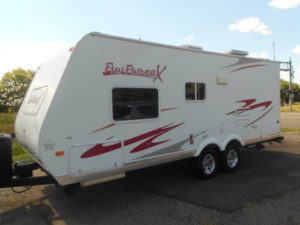
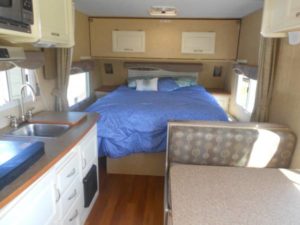
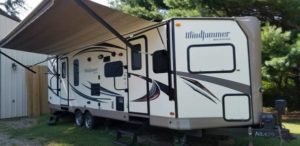
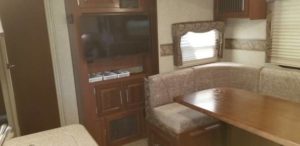
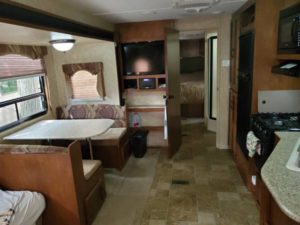
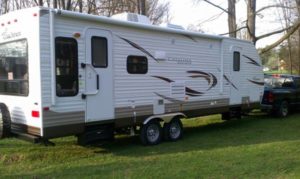
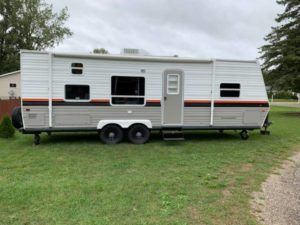
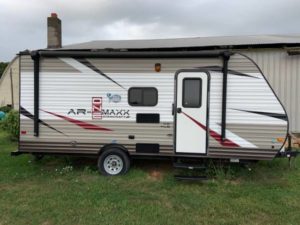
Pictures below are provided by contributors or supporters of this website. If you are interested in sharing your pictures of Nevada, please drop us a note.
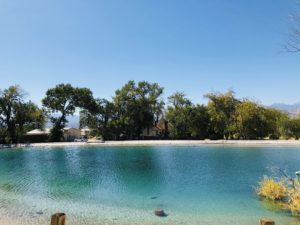
Courtesy S. Ward – Nevada Wildlife Refuge glistening water